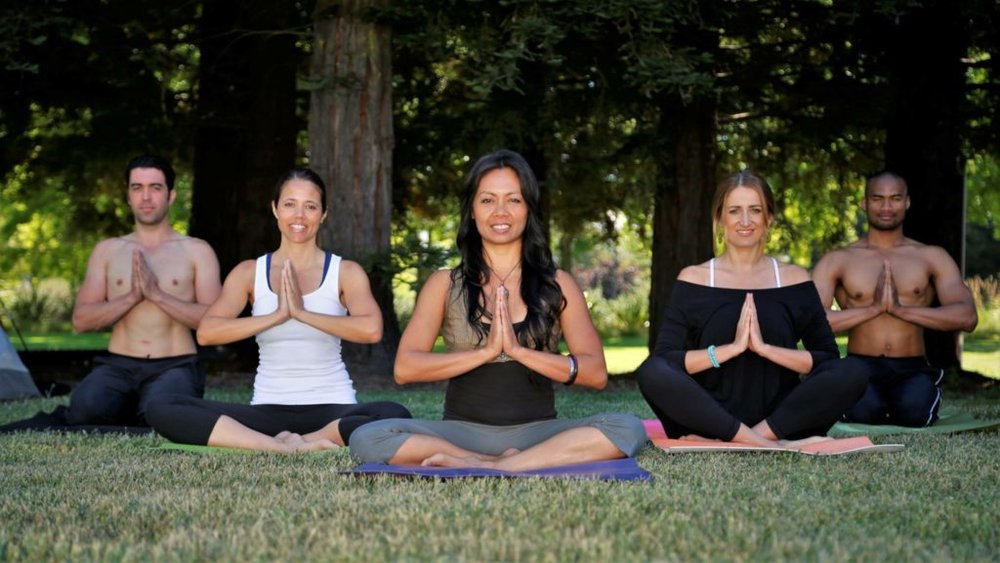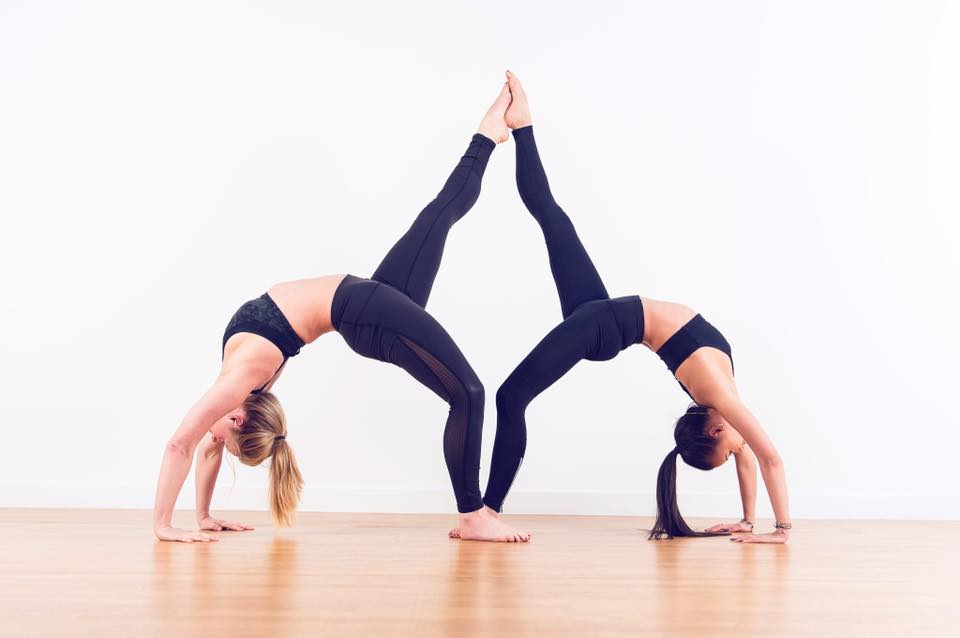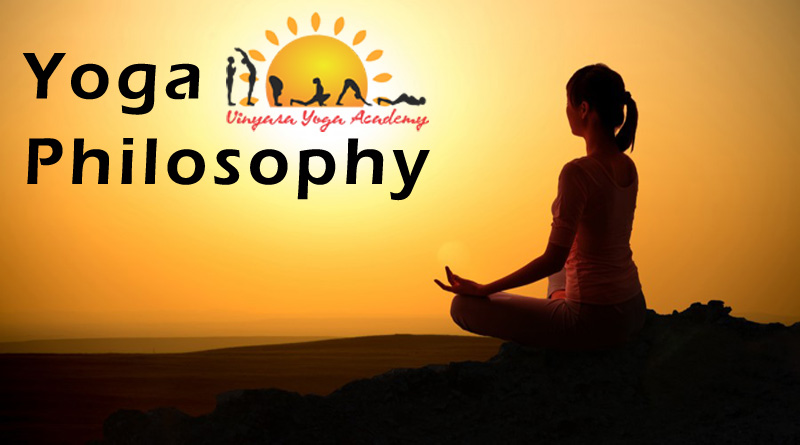
The word yoga is regularly deciphered as “association” or a technique for order from the Sanskrit word “yuj” (to burden or tie). A male expert is known as a yogi, a female specialist, a yogini.
The Postures ….
The contemporary western way to deal with yoga did not depend on a specific conviction or religion, anyway Yoga does has its foundations in Hinduism and Brahmanism. Yoga was created by diviners or religious zealots living principally in the southern pieces of India. The soothsayers watched nature and lived as close as they could to the earth, concentrating the numerous parts of nature, the creatures and themselves. By watching and imitating the distinctive stances and propensities for the set of all animals they had the capacity to create effortlessness, quality, and astuteness.
It was through these restrained lives that the act of the yoga stances was created. It was important to build up a progression of stances to keep the body agile and ready to persevere through extensive stretches of stillness when in contemplation.
The Writings ….
Brahmanism goes back to containing hallowed sacred writings called “the Vedas”. These sacred texts contained guidelines and chants. It was in the most seasoned content “Rg-Veda” from the sacred writings that the word Yoga previously showed up, this was almost 5000 years prior. The fourth content called “Atharva-Veda” contains fundamentally spells for mysterious ceremonies and wellbeing fixes a large number of which utilize therapeutic plants. This content gave the normal individual the spells and chants to use in their regular day to day existence and this routine with regards to “Veda” can, in any case, be found in the lanes of India today.
The Bhagavad-Gita, another old work on otherworldly life portrays itself as a yoga treatise, despite the fact that it utilizes the word Yoga as a profound method. It was from this writing Patanjali’s “eight appendages of yoga” were created. Yoga sutras are principally worried about building up the “idea of the brain” and I will clarify a greater amount of this in the following area.
The Breadth ….
The vratyas, a gathering of fruitfulness ministers who venerated Rudra, divine force of the breeze would endeavor to emulate the sound of the breeze through their singing. They found that they could deliver the sound through the control of their breath and through this routine with regards to breath control was framed “Pranayama”. Pranayama is the art of breath control in yoga.
The Paths ….
The Upanishads, which are the hallowed disclosures of old Hinduism built up the two orders of karma yoga, the way of activity and jnana yoga, the way of information. The ways were created to enable the understudy to free from misery and in the long run increase edification.
The instructing from the Upanishads varied from that of the Vedas. The Vedas requested outer contributions to the divine beings so as to have a plenteous, glad life. The Upanishads through the act of Karma yoga concentrated on the inner penance of the sense of self so as to free from torment. Rather than the penance of harvests and creatures (outer), it was the penance of the internal self-image that would turn into the fundamental logic, accordingly, yoga ended up known as the way of renunciation.
Yoga shares a few qualities likewise with Buddhism that can be followed back through history. Amid the 6th century B.C., Buddhism likewise focuses on the significance of Meditation and the act of physical stances. Siddharta Gautama was the main Buddhist to really ponder Yoga.
What is Yoga Sutra and how did the Philosophy of Yoga create?
Yoga Sutra is a gathering of 195 explanations which basically give a moral manual for carrying on with an ethical life and joining the study of yoga into it. An Indian sage called Patanjali was accepted to have gathered this more than 2000 years back and it has turned into the foundation for traditional yoga theory.
The word sutra implies actually “a string” and is utilized to signify a specific type of composed and oral correspondence. As a result of the curt style, the sutras are written in the understudy must depend on a master to translate the logic contained inside everyone. The importance inside every one of the sutras can be custom-made to the understudy’s specific needs.
The Yoga Sutra is an arrangement of yoga anyway there is anything but a solitary portrayal of a stance or asana in it! Patanjali built up a guide for carrying on with the correct life. The center of his lessons is the “eightfold way of yoga” or “the eight appendages of Patanjali”. These are Patanjali’s recommendations for carrying on with a superior life through yoga.
Stance and breath control, the two basic practices of yoga are depicted as the third and fourth appendages in Patanjali’s eight-limbed way to self-acknowledgment. The third routine with regards to the stances makes up the present current yoga. When you join a yoga class you may find that is all you have to suit your way of life.
The eight appendages of yoga
- The yamas (limitations),
These resemble “Ethics” you carry on with your life by: Your social direct:
o Nonviolence (ahimsa) – To not hurt a living animal
o Truth and trustworthiness (satya) – To not lie
o Nonstealing (asteya) – To not take
o No lust (brahmacharya) – maintain a strategic distance from good for nothing sexual experiences – balance in sex and all things.
o Nonpossessiveness or non-ravenousness (aparigraha) – don’t store, free yourself from insatiability and material wants
- niyamas (observances),
These are the means by which we treat ourselves, our inward control:
o Purity (Shauna). Accomplishing immaculateness through the act of the five Yamas. Regarding your body as a sanctuary and taking care of it.
o Contentment (santosha). Discover bliss in what you have and what you do. Assume liability for where you are, look for satisfaction at the time and develop.
o Austerity (tapas): Develop self-control. Show discipline in body, discourse, and psyche to go for a higher otherworldly reason.
o Study of the consecrated content (svadhyaya). Training. Study books pertinent to you which move and educate you.
o Living with attention to the Divine (Ishvara-pranidhana). Be committed to whatever is your god or whatever you see as the awesome.
- asana (stances) –
These are the stances of yoga:
o To make a supple body so as to sit for a protracted time and still the brain. On the off chance that you can control the body, you can likewise control the brain. Patanjali and other antiquated yogis utilized asana to set up the body for contemplation.
Simply the act of the yoga stances can profit one’s wellbeing. It tends to be begun whenever and any age. As we develop more seasoned we solidify, do you recall the last time you may have hunched down to lift something up and how you felt? Envision as you age into your fifties, sixties, seventies and on having the capacity to even now contact your toes or parity on one leg. Did you realize that most of the wounds continued by the old are from falls? We will, in general, lose our equalization as we become more seasoned and to work on something that will help this is most likely an advantage.
The fourth appendage, breath control is a decent vehicle to utilize in the event that you are keen on learning contemplation and relaxation…….
- pranayama (breathing) – the control of breath:
inward breath, maintenance of breath, and exhalation
o The routine with regards to breathing makes it less demanding to focus and contemplate. Prana is the vitality that exists all over the place, it is the existence drive that courses through every one of us through our breath.
- pratyahara (withdrawal of faculties),
o Pratyahara is a withdrawal of the faculties. It happens amid contemplation, breathing activities, or the act of yoga stances. When you ace Pratyahara you will almost certainly center and concentrate and not be diverted by outward tangible.
- dharana (fixation), – showing the brain to center.
o When focusing there is no feeling of time. The point is to at present the brain, for example, fixing the psyche on one item and pushing any musings. Genuine Dharana is the point at which the psyche can focus easily.
- Dhyani (reflection), – the condition of contemplation
o Concentration (Dharana) prompts the condition of contemplation. In contemplation, one has an elevated feeling of mindfulness and is unified with the universe. It is being ignorant of any diversions.
- samadhi (retention), – total joy
o Absolute delight is a definitive objective of contemplation. This is a condition of association with yourself and your god or the divine, this is the point at which you and the universe are one.
Every one of the eight appendages cooperates: The initial five are about the body and mind Yama, niyama asana, pranayama, and pratyahara – these are the establishments of yoga and give a stage to an otherworldly life. The last three are tied in with reconditioning the psyche. They were created to assist the expert with attaining edification or unity with Spirit.
How would you pick the kind of yoga directly for you?
The kind of yoga you practice is totally an individual inclination and in this manner why we are investigating here to enable you to begin. A few sorts hold the stances longer, some travel through them speedier. A few styles center around body arrangement, others contrast in the cadence and determination of stances, reflection and otherworldly acknowledgment. All are versatile to the understudy’s physical circumstance.
You consequently need to figure out what Yoga style by your individual mental and physical necessities. You may simply need a vivacious exercise, need to concentrate on building up your adaptability or parity. Do you need more spotlight on contemplation or simply the wellbeing viewpoints? A few schools show unwinding, some attention on quality and dexterity, and others are increasingly oxygen-consuming.
I recommend you attempt a couple of various classes in your general vicinity. I have seen that even between instructors inside a specific style, there can be contrasts in how the understudy appreciates the class. It is imperative to discover an educator that you feel great with to really appreciate and thusly make life span in what you practice.
When you begin learning the stances and adjusting them for your body you may feel great to do rehearse at home too! All yoga types have arrangements that can be rehearsed to work distinctive pieces of your body. A fifteen-moment practice in the first part of the day might be your begin to the day. Your body will feel solid and flexible inside no time and with learning, the decision is there for you to build up your very own schedules.
The Major Systems of Yoga
The two noteworthy frameworks of yoga are Hatha and Yoga Raja Yoga. Raja yoga depends on the “Eight Limbs of Yoga” created by Patanjali in the Yoga Sutras. Raja is a piece of the traditional Indian System of Hindu Philosophy.
Hatha yoga, additionally Hatha Vidya is a specific arrangement of Yoga established by Swatmarama, a yogic sage of the fifteenth century in India. Swatmarama assembled the “Hatha Yoga Pradipika”, which presented the arrangement of Hatha Yoga. Hatha yoga is gotten from various distinctive customs. It originates from the customs of Buddhism which incorporate the Hinayana (restricted way) and Mahayana (extraordinary way). It additionally originates from the conventions of Tantra which incorporate Sahajayana (unconstrained way) and Vajrayana (concerning matters of sexuality). Inside Hatha yoga, there are different branches or styles of yoga. This type of yoga works through the physical mechanism of the body utilizing stances, breathing activities and purifying practices.
The Hatha Yoga of Swatmarama varies from the Raja Yoga of Patanjali in that it centers around Shatkarma, “the decontamination of the physical” as a way prompting “cleansing of the psyche” and “crucial vitality”. Patanjali starts with “refinement of the psyche and soul” and afterward “the body” through stances and breath.
The Major Schools of Yoga
There are around forty-four noteworthy schools of Yoga and numerous others which likewise make a case for being Yogic. A portion of the significant schools is Raja Yoga and Hatha Yoga (as referenced previously). There are likewise Pranayama Yoga and Kundalini Yoga which come from Hatha. Jnana, Karma, Bhakti, Astanga, and Iyengar originate from Raja.
The Yoga Styles that originate from Hatha include:
Pranayama Yoga
The word pranayama implies prana, vitality, and ayama, extend. Breath guideline, prolongation, extension, length, stretch, and control depicts the activity of pranayama yoga. Some Pranayama breath controls are incorporated into the Hatha Yoga practices of a general sort (to address breathing challenges).
This school of yoga is totally worked around the idea of Prana (life’s vitality). There are around 99 distinct stances of which a great deal of these is based around or like physical breathing activities.
Pranayama additionally signifies grandiose power or the intensity of the whole universe which shows itself as a cognizant living being in us through the wonder of relaxing.
Kundalini Yoga
Kundalini yoga is in the convention of Yogi Bhajan who acquired the style toward the west 1969. It is a profoundly otherworldly way to deal with hatha yoga including reciting, contemplation, breathing strategies all used to raise the kundalini vitality which is situated at the base of the spine.
The Yoga Styles that originate from Raja include:
Raja Yoga/Ashtanga Yoga
Raja implies illustrious or royal. It depends on guiding one’s life power to bring the brain and feelings into equalization. By doing as such the consideration would then be able to be centered around the object of the contemplation, to be specific the Devine. Raja Yoga or Ashtanga Yoga is one of the four noteworthy Yogic ways of Hinduism. The others are Karma Yoga, Jnana Yoga, and Bhakti Yoga. Raja or Ashtanga are gotten from the “eight appendages of Yoga” rationality made by Patanjali.
Power Yoga
Power Yoga has been concocted through the lessons of Sri K. Pattabhi Jois, a prestigious Sanskrit researcher who propelled Western Yogis with his Ashtanga Yoga Style and theories. It is accordingly regularly alluded to as the western form of India’s Ashtanga yoga.
Power yoga is overwhelming and athletic and is along these lines extremely prominent with men. It works with the understudy’s psychological frame of mind and point of view and joins the eight appendages of yoga into training.
Jnana Yoga
Jnana (at times spelled “Gnana”) implies shrewdness and a Jnani is an astute man. Once in a while alluded to as the” yogi of acumen”.
This type of yoga centers around examining internal life and adhyatmic subjects, the act of specific relaxations and insightful, thoughtful kriyas. The primary motivation behind jnana contemplation is to pull back the brain and feelings from seeing life and oneself in a tricked way so one may observe and live in attunement with the real world or soul. This type of yoga centers around contemplation to work
towards change and illumination.
Karma Yoga
Karma signifies “activity”. Karma yoga is based around the control of activity dependent on the lessons of Bhagavad Gita, a heavenly sacred text of Hinduism. This yoga of benevolent administration centers around the adherence to obligation (dharma) while staying segregated from the reward. Karma is the entirety of our demonstrations, both in the present life and in the first births.
Bhakti Yoga
Bhakti yoga has numerous stages to its training. Bhakti signifies “commitment” and Guna Bhakti is to venerate as indicated by your inclination. A professional of Bhakta Yoga isn’t restricted to any one culture or religious category, the methodology is more to the inward life instead of the entirely reverential. Oneself inside loves the self of the all-inclusive nature.
Bhakti yoga is the condition of being in contact with our reality and being and the presence and being of all things. It doesn’t make a difference in the event that you put stock in something or you don’t the main quality is the receptiveness to the psyche and heart, unforeseen and obscure.
The individuals who have found out about Quantum material science where every single iota known to mankind is associated with the fundamental reality will almost certainly compare this to the rationality behind Bhakti yoga.
Iyengar Yoga
Iyengar Yoga was created in India by B.K.S Iyengar, brought into the world fourteenth December 1918. At 16 years old, he was acquainted with yoga by his Guru Sri T. Krishnamacharya. Iyengar Yoga is presently a standout amongst the most well-known styles rehearsed in the west.
Educators are truly learned about the life structures and exact body place for each stance. There is less spotlight on pranayama or breathing methods and intercession and along these lines why the training is well known in the west.
Iyengar Yoga underlines more on the right situation of the feet to guarantee the spine and the hips are in arrangement. Iyengar has created a wide range of props and systems to provide food for people in their training.
Different Styles
Vital Yoga or Purna Yoga
Vital yoga is a yoga of combination, blending the ways of karma, jnana and bhakti yoga. It was created by Swami Satchidananda.
It is additionally viewed as a blend between Vedanta (Indian arrangement of logic) and Tantra (Asian convictions and works on utilizing the rule that the perfect vitality makes and keeps up the universe, directing the vitality inside the human microcosm). It has likewise been clarified as a blend among Eastern and Western ways to deal with otherworldliness.
Stances are gentler than different types of yoga and classes typically end with broadened times of profound unwinding, breathing, and reflection. Indispensable Yoga is an inside and out way to deal with hatha yoga.
Sivananda Yoga
Sivananda yoga offers a delicate methodology. It incorporates contemplation, reciting and profound unwinding in every session. Understudies are urged to be solid which incorporates being vegan.
Bikrams Yoga
Bikrams yoga was established by Bikram Choudhury who was educated by Bishnu Ghosh the sibling of Paramahansa Yogananda. Bikrams Yoga is instructed for the most part in a room the temperature set somewhere in the range of 95 and 105 degrees.
The warmth mellows the muscles and tendons. There are around 26 stances and this yoga delivers a genuine exercise as a result of the warmth is very serious. This yoga in this manner puts more accentuation on the physical execution of the stances, not the sides of unwinding and contemplation.
A portion of the Great Teachers…
All styles share a typical ancestry. The originators of two of the real styles of yoga Raja/Ashtanga and Avenger were all understudies of a similar extraordinary educator named Krishnamacharya.
Shri T. Krishnamacharya was conceived in the town of Muchukunte, Karnataka State, in 1888. His formal Education, to a great extent in Sanskrit, included Degrees from a few colleges in North India. He considered for a long time under a recognized yogi in western Tibet: Rama Mohana Brahmachari who trained him the remedial utilization of asanas and pranayama. At that point, he came back to South India and built up a school of yoga in the royal residence of the Maharajah of Mysore. He passed away at 101 years old years in 1988.
Necessary Yoga and Sivananda Yoga were additionally established by understudies of another incredible instructor named Sivananda. Swami Sivananda Saraswati was conceived Kuppuswamy in Pattamadai, Tamil Nadu, India. A Hindu by birth, he is a notable advocate of yoga and Vedanta (the main part of Hindu reasoning).
He is presumed to have composed more than 300 books, on these and related subjects, amid his life. In 1936 he established the new religious development “The Divine Life Society” on the bank of the heavenly Ganges River. He passed on the fourteenth of July, 1963.
So which type is directly for you?
These are not every one of the kinds of yoga accessible, anyway, you can see from the short clarifications of every that Yoga practice can contrast significantly. Every one makes utilization of the physical stances and breathing to fortify the body for reflection, an intrinsic piece of yoga practice.
This is the place it is imperative for the understudy to comprehend what they look for from their yoga practice and pick a style which will provide food for this. On the off chance that you attempt one and don’t assume it is sufficiently physical, attempt another as it will be entirely unexpected. In the event that you begin one that is excessively requesting than again switch around until you discover the training for you.
A few of us need to simply take a shot at the body and some need more spotlight on a technique for looking for self-acknowledgment, whatever the reason I am certain there are sufficient styles out there and additionally building up every day to cook for our necessities.
You are never too old to even think about starting yoga, I have met individuals in their seventies beginning out of the blue and encountering groundbreaking effects. In the event that you’ve at any point sat and watched your feline or canine alert in the first part of the day what is the primary thing they do? extend. On the off chance that we stop for one minute and watch what we can gain from nature and the set of all animals, we will understand that simply the basic demonstration of extending has been lost someplace through our development.
The table underneath demonstrates the rating somewhere in the range of 1 and 10 I have given to clarify the level of Physical and level of Meditation/Relaxation in every Yoga practice (10 being the most astounding)
Name of Yoga Physical Rating Meditation and Relaxation Rating
Pranayama Yoga 4 8
Kundalini Yoga 6 8
Raja Yoga/Ashtanga Yoga 10 6
Power Yoga 10 2
Jnana Yoga 6 8
Karma Yoga 6 8
Bhakti Yoga 6 8
Iyengar Yoga 8 4
Indispensable Yoga or Purna Yoga 6 8
Sivananda Yoga 6 8
Bikrams Yoga 10 (due to the heat) 2
Lisa runs “Khata” supplies “endowments of importance” for those extraordinary individuals throughout your life that have an enthusiasm for Eastern Arts, theory and culture.
 Bring Your Best You Your No.1 Healthy Lifestyle Blog
Bring Your Best You Your No.1 Healthy Lifestyle Blog



